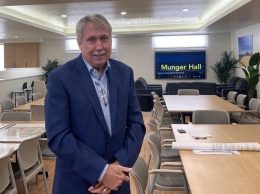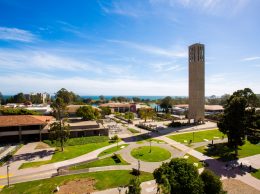Ruling on UCSB researcher’s death unlikely to provide real answer

By the time you read this, a coroner’s inquest into the death in Singapore of a promising young UC Santa Barbara-trained scientist will be headed toward a verdict.
The coroner’s ruling cannot be appealed and thus it will be the official word on whether Shane Todd was murdered or committed suicide. It is a case that has been largely pushed aside amid scandals over media wiretaps, Ben Ghazi and the IRS, but on the theory that the only causes worth defending are lost causes, we’ll try to understand what’s been going on.
Shane Todd, 31, was doing landmark research on gallium nitride, or GaN, a material that has tremendous potential to improve the efficiency and processing speed of semiconductors. He received his Ph.D. in electrical engineering from UCSB and was close to Bob York and John Bowers, two well-known and highly respected UCSB professors.
Last year, Todd became increasingly concerned that his work could wind up in the hands of Chinese officials in a way that could compromise national security, and he made arrangements to quit his job at the prestigious Institute of Microelectronics in Singapore. Just a few days before he was to return to the U.S., Todd was found hanged to death in his apartment by his girlfriend.
Intervention by his parents, the FBI and a couple of U.S. senators helped reopen the case of Todd’s death, which was immediately ruled a suicide. So far, the coroner’s inquest has heard testimony on both sides, with a parade of some 36 witnesses expected to appear.
The Singapore police are sticking to their suicide scenario, saying that Todd’s recent web searches reflected an increasing level of depression. According to reporting from Bloomberg, the Financial Times and AP, the police cited a lack of evidence of forced entry and suicide notes Todd allegedly wrote to back up their conclusion.
Todd’s parents say the notes are obvious forgeries and they said evidence of lack of forced entry cuts two ways. Via video link on May 21, Edward Adelstein, a deputy coroner from Missouri, told the inquest that Todd’s injuries are consistent with those that might be created by expert killers trying to fake a suicide.
“People who know how to kill you will kill you in a way that makes it difficult to detect,” Bloomberg News reported Adelstein saying in response to a question asking him to back up his finding. “Maybe I’m more conspiratorial than you are,” he added. Adelstein based his evidence on photographs of the body, clearly laboring at a bit of a disadvantage to the cops who were able to see it.
From halfway across the world, it seems hard to imagine that the coroner’s office will overrule the Singapore police force and the Institute of Microelectronics and rule that there is sufficient evidence to launch a full-blown criminal investigation. There has also been testimony tied to Todd’s deep-rooted worry that some of his research could be co-opted by the Chinese via a large telecoms equipment company called Huawei.
But there is plenty to doubt from the police account — the apartment was not secured, the police were fairly blasé about the whole matter and they stonewalled on asking the FBI to assist until the Todd family forced the issue by refusing to turn over a hard drive found in Shane’s apartment to anybody but the feds.
To anybody who attended the recent UCSB Summit on Energy Efficiency, two things were very clear. First, that gallium nitride is a very, very big deal when it comes to building all sorts of advanced devices, whether they are light fixtures, server farms or radar jamming gear.
And second, the Chinese are ruthless in their pursuit of market share — whether it is in solar cells or the global supply of semi-precious metals.
Does that all add up to murder? The coroner may get the last word but it is unlikely to be the final answer.
• Contact Editor Henry Dubroff at [email protected].










